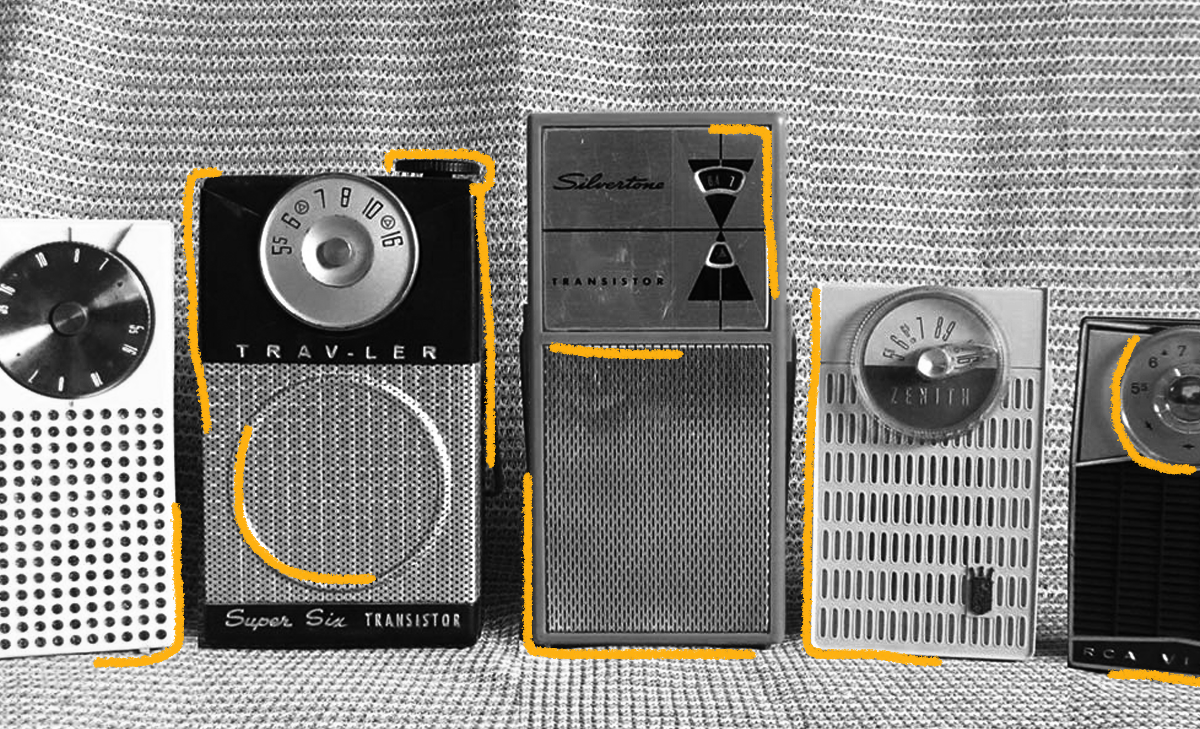The Regency TR-1
The first transistor radio was created as a joint project between I.D.E.A. (Industrial Development Engineering Associates) and Texas Instruments. Texas Instruments built the transistors and the Regency division of I.D.E.A. built the radio. On October 18, 1954, they released the Regency TR-1 just in time for the Christmas shopping season. It featured a gold dial and was available in a variety of colors. It was easily portable, measuring just five inches high, and used four transistors. It was able to receive AM radio stations and had an impressive 20-hour lifespan due to its 22.5v battery. However, it was quite expensive – the TR-1 retailed for around $50, which translates to nearly $400 today. Around 150,000 units were sold, but the TR-1 wasn’t produced for very long.
Signaling a Change
Despite its short life, the TR-1 changed the face of consumer radio forever. Previous models were large and mostly stationary. Because these radios used breakable vacuum tubes, they were also very delicate. In most cases, families would huddle around a single large wooden radio in their home and listen to programs together. In contrast to these older models, the TR-1 was small and much less easy to break. It was also highly portable and changed the way that Americans enjoyed radio. Instead of a family affair, teenagers began listening to the radio alone or with groups of friends.

New Models & Further Improvements
Shortly after the TR-1 went out of production, Japanese manufacturers began selling cheaper and smaller transistor radios to the American public. Sony’s TR-55 and TR-63 were particularly notable, but Sharp and Toshiba also sold transistor radios. These Japanese models brought prices down significantly, and by the 1960s, transistor radios cost around $15 (about $117 today), making them affordable birthday and Christmas presents during the prosperous 1960s. In addition to lower prices, the first half of the decade also saw the addition of FM capabilities to the previously AM-only transistor radio. Many models even had a single plug-in earphone for private listening, not unlike the headphones used with later devices such as the Walkman and the iPod.
A Revolutionary Legacy
The transistor radio wasn’t just a revolutionary piece of technology – it also revolutionized music and youth culture. For the first time, young people had the freedom to listen to music and world news amongst themselves without the threat of parental disapproval. In providing this avenue for artistic expression and the dissemination of new ideas, the transistor radio played a significant role in many of the musical and cultural movements of the 1950s and 1960s.
Eventual Decline
The transistor radio began to decline in popularity in the late 1970s as the cassette and the Walkman took over. The Boombox, the Discman, and the iPod arrived over the following decades, replacing the transistor radio and, further, eroding broadcast radio’s status as the most important way to reach the masses with music and ideas. While radio may be less significant these days, the concept of a small handheld device that provides access to music and ideas is more popular than ever in the form of today’s smartphone. But it all started with the transistor radio way back in 1954.



